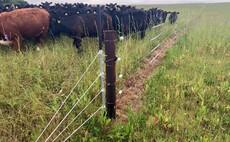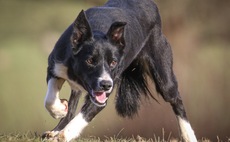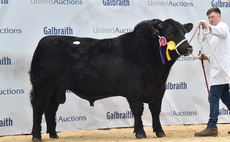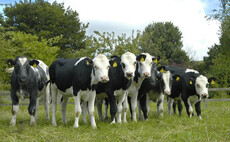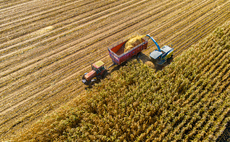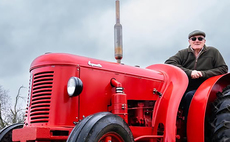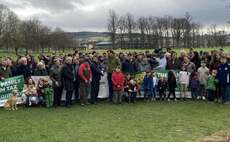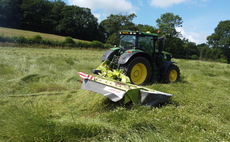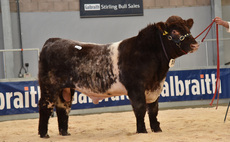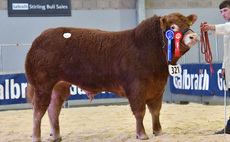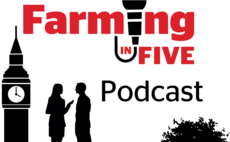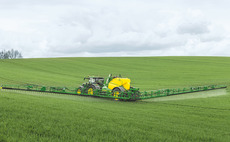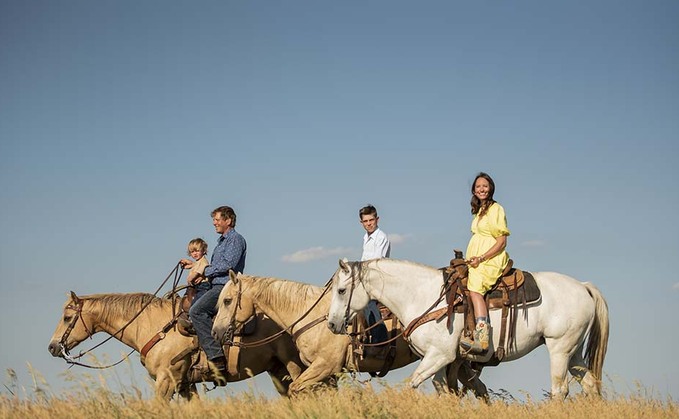
Ag in my Land is a special series that looks at farming across the world. Here, Emily Ashworth talks to Natalie Kovarik about life on her ranch in Nebraska.
It is not hard to see why Natalie Kovarik loves her life on her beef ranch in central Nebraska. Scrolling through her Instagram profile, which has gathered more than 40,000 followers, her images are easy to get lost in, from vast open landscapes scattered with roaming cattle, to her snapshots of her husband, Luke, and three children, Tad, 15, Jaks, three, and eight-month old Rue.
But it runs deeper than the idyllic social media profile. Farming is in Natalie's blood and it is, quite simply, who she is.
She is a fourth generation farmer, ‘born and raised on a registered Hereford operation' in Southwest Montana.
She says: "This way of life has always been familiar to me. My family settled in the area in 1914 and has been tending to the same land where the headwaters of the Missouri River merge against the backdrop of the Rocky Mountains [ever since].
"The same goes for my husband. He was born a fifth generation rancher's grandson, exposed to the ranching and farming lifestyle among the endless corn fields of central Nebraska. Both our agricultural stories were penned for us by the many generations before us.
"It is our hope that they will continue to be penned by the many generations to follow us."
Together, Natalie, 33, and her husband Luke now run Kovarik Cattle Company, in Ord, a small town sat on the eastern edge of the Nebraska Sandhills. The climate varies drastically from western to eastern Nebraska too, receiving about 24 inches of rainfall over the year, and highs above 37decC to minus temperatures in the winter.
Surroundings
It's one of the most intricate and intact grassland ecosystems in the Great Plains, with 85 per cent of its natural habitat still in place," Natalie says.
"The topography is composed of mixed prairie grass and stabilised sand dunes, making the Sandhills home to some of the prettiest lush rolling green hills you could imagine. Not a day goes by that I am not grateful for my surroundings and the role I play in both improving and preserving them."
Extending to 2,630 hectares (6,500 acres) - a combination of owned and rented land - the ranch runs a commercial herd of 600 Angus cross Herefords. They also run a registered herd of pure Angus cattle, which are reared through summer and autumn on a forage-based diet and sold at 18 months through an annual bull sale held in January.
With a focus on maternal performance, they feel that such breeds are best suited for their goals and desired traits and outcomes. It is an extensive system with cattle out to pasture all year round, normally grazing for 11 months of the year and supplemented with cake for around four months as needed.
Natalie says: "We calve our registered herd in July and August and wean them in February. For our commercial herd we use AI and then expose them to a clean-up bull for 60 days and calve in May and June. Those calves are weaned after the first of the year and we background them for 60 days, marketing them as grass yearlings weighing around 600- 650 pounds in mid-March. Our replacement heifers are marketed privately at the same time. We sell our steers through the market at a local sale barn."
Communicate
The ranch is undoubtedly impressive, yet many question operations of such a large scale. Natalie, however, has a platform that she uses to inform and educate, openly speaking about the benefits of American ranches just like her family's.
"We've been given a tool that's literally in the palm of our hands and enables us to share our lifestyle and the truth behind what we do and who we are," she says.
"Sharing our story online may seem small, but I think the effects of it ripple outwards far greater than we can see or even know. Land stewardship is something that my husband and I are extremely passionate about. We believe that animals, plants and soils play a synergissynergistic role to each other. Our ranch practices aim to use the three together enabling us to give back to the land, instead of just taking from it.
"We truly believe that when it comes to the balancing the act of feeding a growing population while protecting and preserving the planet, the best solution we have is agriculture. Ruminant animals like cattle, sheep and buffalo help the land to act as a carbon sink, which is one of the best tools we have at mitigating climate change. There is still a lot of support for the industry in general, but there is also a plethora of misinformation playing a role in the disconnect between rural and urban areas."
The farm works closely with the Natural Resources Conservation Service, part of the United States Department of Agriculture, to look at environmental practices on farm such as cross fencing, pollinator habitats, cover crops, wildlife ramps and wind breaks.
"We implement non-till planting and seeding as well as rotationally grazing our cattle herd, and cover crops including oats, rapeseed, lentils and turnips and radish," says Natalie.
"We plant rye after any row crop that we have. This provides soil cover through the winter and weed suppression in the spring."
Community
Between her boys and running the ranch, life is busy, but there is no doubt that she would live anywhere else in the world or be doing anything else.
"We live in an agricultural community as well as state, so our lifestyle is both understood and supported," she says.
"We have rodeos and small festivals that honour our local area. For instance, we have popcorn days which is a three-day festival to honour that we're one of the top popcorn producing counties in the nation. Ranching and farming isn't just an occupation - it's a way of life. Much of our time as a family is spent together outside bouncing around in a dusty old tractor or out at pasture on horseback as we feed or tend to our cattle - and while that may seem foreign to most, it feels like home to me.
"I love that my family spends somuch quality time together living out our passion while making meaningful memories."
It is certainly a legacy to behold, and considering the rich farming history of her family, what lay in store for the future of their ranch?
"We would never force our boys to carry on the ranch out of obligation or duty, but it is most definitely a hope that one of them will feel called to continue the ranch and what Luke and I have worked hard to build," Natalie says.
"But we're healthy and blessed to be living the lifestyle we do."
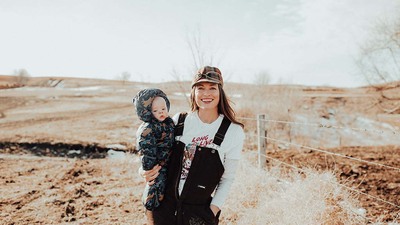
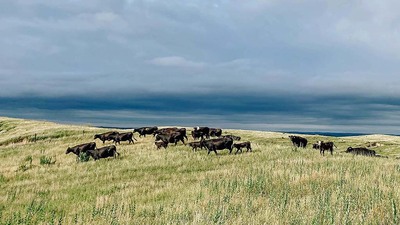
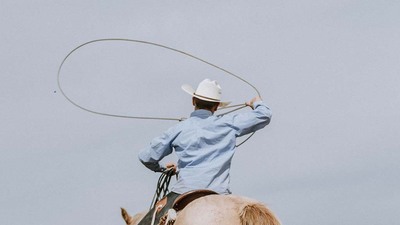
Farm facts
- Ranch situated in Ord, central Nebraska
- Extends to 2,630ha (6,500 acres), both owned and rented
- 600 head herd of Aberdeen-Angus cross Hereford cattle sold through a local market
- Registered herd of 100 Angus cattle sold through a private annual sale
- 24 inches of rainfall per year
- Cattle out to pasture for 11 months of the year










